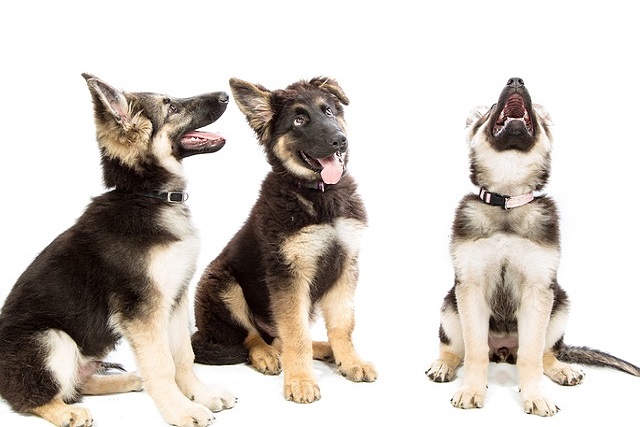
Should I give my dog vitamin supplements
If you’ve ever stood in the pet store aisle, staring at bottles of dog vitamins labeled “immune support” or “shiny coat,” you might’ve wondered if your pup really needs them.
You’re halfway out the door when your dog starts whining, paws scraping against the crate bars. Maybe they’re reacting to squirrels darting past the window or the neighbor’s cat taunting them from the sidewalk. For pups prone to anxiety, that wire crate can feel like a fishbowl – exposed and overwhelming. Could tossing a blanket over the top actually help? Let’s unravel the science behind the cover.
Covering a crate taps into a dog’s hardwired desire for a den-like sanctuary. In the wild, canines seek enclosed, dim spaces to feel secure from threats. A partial cover mimics this, reducing visual overstimulation – think of how closing blinds in a bustling Manhattan apartment creates instant calm. For dogs hyper-vigilant about every passing car or pedestrian, a covered crate limits "trigger stacking," where small stressors snowball into full-blown panic. But it’s not magic: success hinges on your dog’s personality. Some pups, like Velcro-prone rescue dogs from high-stress backgrounds, might relax instantly with a draped crate in a quiet corner. Others, particularly heat-sensitive breeds like French Bulldogs in sun-drenched Arizona homes, might feel trapped. Always prioritize ventilation – never seal the crate completely. Use breathable fabrics like cotton sheets, leaving at least two sides fully open for airflow.
This approach dovetails with modern positive reinforcement training standards across the EU and North America. Forcing a fearful dog into a covered crate or ignoring distress signals violates core animal welfare principles. Instead, build positive associations: drape the cover after your dog settles willingly inside, rewarding calm behavior with high-value treats like frozen lick mats. Remember, using confinement (covered or not) as punishment isn’t just culturally unacceptable in places like Oslo or Portland; it can breach animal cruelty laws. Responsible ownership extends beyond the crate, too. Keep rabies vaccines current (legally required in all 50 U.S. states and EU nations), and always carry biodegradable bags during walks. Scooping poop in communal spaces like Berlin’s Tiergarten or Seattle’s dog parks isn’t just neighborly – it’s often mandated by local ordinances to protect ecosystems and public health.

Apartment dwellers face unique challenges where crate covers shine. In tight spaces with constant foot traffic or noisy elevators, a covered crate buffers auditory/visual chaos. Picture a rescue Greyhound in a Chicago high-rise, startled by hallway commotion – a half-covered crate with white noise playing can prevent "barrier frustration" barking that strains neighbor relations. Placement matters: avoid heat vents or sunny windows (overheating risks!), and ensure the crate size allows your dog to stand/turn comfortably. Pair covering with other anxiety reducers: leave recently worn clothes nearby for scent comfort, and practice gradual departures starting with 30-second "fake exits."
But does covering work for all anxiety? Not universally. Dogs with confinement phobia or severe separation distress may panic more if visually isolated. If your pup pants, drools, or escapes when covered, abandon the tactic. Instead, consult a certified behaviorist – many European insurers even cover this under pet wellness plans. Take Luna, a spaniel in Bristol whose crate-covering trial failed; her owner switched to a playpen with visual barriers, pairing it with desensitization training for door triggers.
Ultimately, a thoughtfully covered crate can ease anxiety by creating a buffered, den-like retreat – but only when:
Introduced positively (never forced)
Prioritizes safety (temperature, airflow, escape-free)
Complements other support (training, environmental tweaks)
When done right, that simple blanket transforms a wire box into a security cocoon, helping your dog feel anchored in our overstimulating human world. It’s about respecting their need for safe retreats while upholding our shared responsibility to train kindly and keep communities clean.

If you’ve ever stood in the pet store aisle, staring at bottles of dog vitamins labeled “immune support” or “shiny coat,” you might’ve wondered if your pup really needs them.

If you’ve ever thought about swapping your dog’s kibble for something homemade, you might’ve worried: “Will I get the nutrients right?”

If you’ve ever watched your dog tilt their head like they’re confused, or scratch at their ear until they whimper, you might be seeing signs of an ear infection.

Golden Retrievers, with their lush coats and playful spirits, often steal hearts in parks and homes alike. But that same thick fur that makes them so cuddly can sometimes be a double-edged sword when it comes to skin health.

If you’ve ever left a friend’s house with a dog and spent the next hour sneezing, your eyes red and watery, you’ve probably wondered when the discomfort will end.

If you’ve ever watched your dog scratch until their skin turns red, or noticed them licking their paws raw after a walk, you’ve probably wondered what’s causing their discomfort.